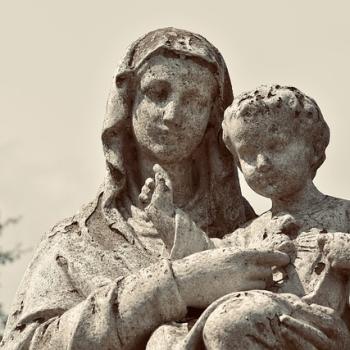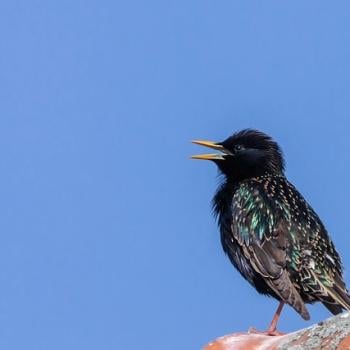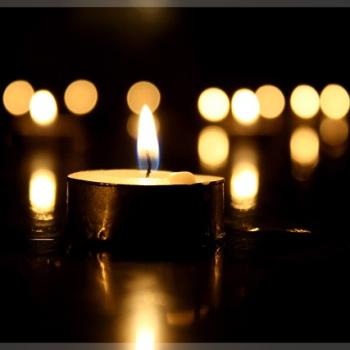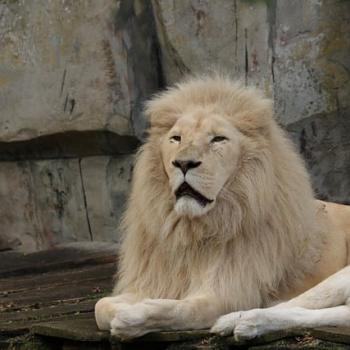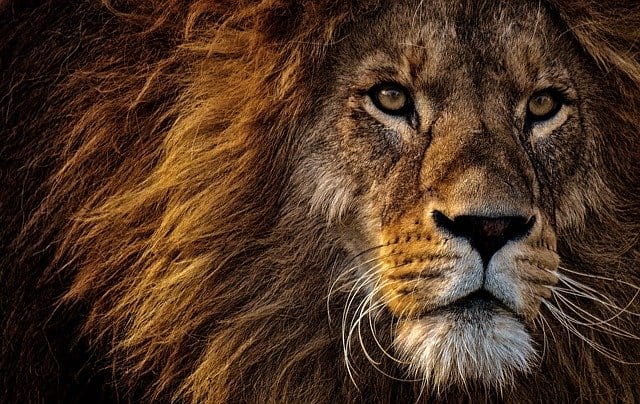
When I was a very little girl I used the word “real” to mean ordinary, commonplace; not numinous, fanciful. or even surprising. Things that surprised me or didn’t look the way I’d expected were “not real.” Real clowns at the circus wore cone-shaped hats and had red noses; clowns whose aesthetic deviated from this design were not real. The ponies at the petting zoo were real, but Clydesdale horses were not real. Cereal and waffles were real breakfasts; eating leftovers for breakfast wasn’t real.
As I grew up, I developed a more precise vocabulary, but I still have those two categories with those names firmly placed in my mind. Everything I see is either real or not real– and here in dreary Steubenville, most of the things I see are real. The neighborhood cats are real. Murmurations of starlings in the trees across the street and the mumbled conferences that pigeons hold on my roof are real. Gnats and pantry moths and bedbugs are all, depressingly, real. I see very few unreal, surprising, awe-inspiring things, particularly in dreary November.
Yesterday, a dear friend came to town– one of those people I met and came to love on the internet but hadn’t ever seen in person. When she came to my front door in person, dressed in a fluffy white winter coat, I had a sensation like vertigo: this wasn’t a real human being. She was one of my internet friends, a person who truly exists in one sense but is immaterial like an archangel. Friends are things you believe in, not things you see in front of you. But then my friend hugged me, hard, and I hugged her back, and I realized that she was very real. I hadn’t dreamed my correspondence with her or seen her in a vision. She was here, just as she promised and right on time, and she was going to take my family and me to Pittsburgh for a day at the zoo.
I hadn’t been to a zoo in well over a decade, not since long before I came to Steubenville, and I’d never been to the one in Pittsburgh. The whole trip into the city, Rosie was marveling at every little thing out the window– both the things I call real, like bare trees and farmers’ fields, and the things that I call unreal. The great big tunnel and the yellow bridge as you’re coming into Pittsburgh from the west are not real.
When we got to the zoo, we went up an escalator far too tall to be real into a whole world of glorious, marvelous, unreal creatures– creatures it took an act of faith to believe in, even though I knew they were right in front of me. It seems to me that faith is more than just the proof of things unseen. Faith is also the virtue it takes to believe your own eyes as you marvel at impossibilities like suspension bridges, friends, and the tiger at the zoo.
Something about the massive size of a tiger always throws me off. When I read about them in books I imagine them being about the size of a Great Dane, but they’re not. They’re barely smaller than a car. The Pittsburgh Zoo, like the rest of Pittsburgh, is built on very hilly ground, so the animal enclosures have hills in them that display the animals beautifully to a large audience. The tiger was at the top of her hill, alternately padding about and lying down, indifferent to our gasps of admiration.
And then a lion roared.
I didn’t even know we were next to the lion’s enclosure until I heard it: not one long rumble but a series of short rumbles, eerily close. I had never heard a lion’s roar coming straight from a lion before. The helpful card I found later beside the lion’s enclosure informed me that it could carry for five miles, and I believed it–not because of how loud it was but because of the depth. That’s a sound that could crack open pavement. And then the source of the noise came over the hill– a great golden lion, gazing at me.
Lions do not look. They gaze.
I gazed back at the lion.
I don’t think I’d ever understood before why the lion is called the king of beasts and so often associated with God and the angels, but I knew just then. It’s not just that a lion is an enormous predator with a voice that can carry for five miles– it’s the face. There is no way for me to adequately describe the experience of staring at a lion’s face, in person. Looking at a photo doesn’t carry the same weight, just as hearing a recording of a lion’s roar can’t convey the experience of hearing it behind you when you didn’t know there was a lion nearby. It’s partly to do with the symmetry of that face: the white patches under the eyes, the dark triangle of the nose, the crowning halo of the mane. A lion doesn’t look like a real animal. A lion looks like an icon of God, painted by some alien race.
I gazed on the lion until he lost interest; I am not uncanny to a lion, and he soon tired of me. He coolly turned his back and slumped over to rest, and the spell was broken. A drowsing lion might as well be a discarded fur coat. They are only unreal when they are alert.
Next came the leopard, and shortly after, the cheetah. They were both pacing very close to where we could see; if the wall of the enclosure had been chain link instead of glass, I’d have been tempted to pet them. The difference between a leopard and a cheetah is that a leopard is sturdily built but a cheetah is skinny with an oversized curve in the rib cage– they need gigantic lungs to get the energy to sprint. A leopard looks like a real animal painted with unreal spots, but a cheetah looks like a stylized drawing of a leopard.
The giraffes and the zebras were off display, but there were three elephants keeping warm indoors. Elephants are my favorite animal. They look real, right up until they move. When they stand still they are comfortably large, dull gray beasts that smell about like a domestic cow, just a larger variety of ruminant. But when they move, elephants betray themselves to be fairy tale creatures right out of a Medieval bestiary. They walk with the most uncanny grace– stumpy cylindrical legs that step forward like a ballerina doing a glissade, as their trunks coil up and down. No one practical or logical could ever imagine an elephant. It took God to do that.
At the end of the visit, we went to see the aquarium.
Fish are not real either. There was not a single fish in that building that looked like my idea of a fish. They were all too gigantic or too impossibly tiny; flat like coins or puffy like a Japanese Lantern; metallic, iridescent, colored in shades too bright to be a living thing and not a plastic toy. A Jewish friend recently told me that fish are considered pareve, not meat, because fish come from a different world than we do– the alien one underwater, not the commonplace one where creatures breathe air. And it must be true. Nothing from the world I know could look like a fish.
After the zoo, we went to a nearby park. Rosie dashed around a great wooden castle, giggling and pretending; we three grown ups at first sat on a bench, then climbed to the top of the tallest wood tower to watch the sun set over a reservoir. The sky was streaked orange and gray as the world went black and purple, majestic, mysterious.
The sun, when it rises and sets, is not a real thing either.
It takes a supreme act of faith to believe in something as outlandish as a sun.
The sun, suspension bridges, tunnels, elephants, lions and tigers, leopards and cheetahs, tropical fish and good friends exist. The good, the beautiful, the bizarre and the unexpected exist. But it takes faith to believe in them because they are too wondrous to be real.
There’s a lesson in all of this somewhere.
(image via Pixabay)
Steel Magnificat operates almost entirely on tips. To tip the author, visit our donate page.




